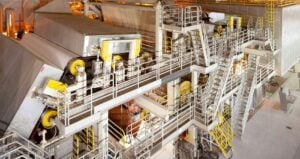The AI investment cycle is accelerating into 2026; Analyst firm Gartner now expects worldwide spending tied to artificial intelligence across hardware, software, and services to climb from roughly $1.5 trillion in 2025 to more than $2 trillion in 2026.
That trajectory extends the rapid step-up in data center construction, AI-optimized servers, and tools that embed models into everyday products.
On the real-economy side, discrete manufacturing is set up to benefit first. Factory managers already use computer vision and simulation to reduce scrap, optimize lines, and shorten design cycles.
The migration to AI-native workflows, from digital twins to automated quality control, can show up directly in yield and throughput. Professional services is the other standout.
Firms that bill by the hour have begun to automate document drafting, discovery, code remediation, and financial analyses, freeing senior staff to focus on higher-value work.
In both sectors, the path from pilot to production is visible and the return-on-investment math is tangible. Wall Street’s mechanics behind the $2 trillion figure matter for investors. Much of the near-term spend is capital intensive.
Hyperscalers are buying accelerators, building power-hungry server halls, and funding the networking needed to move large datasets fast.
That money flows into chipmakers, substrate and memory suppliers, server integrators, power equipment vendors, and specialized software.
It also reaches the broader tech stack as AI features ship in consumer hardware and enterprise applications.
Recent market action, including a session where Nvidia and CoreWeave keep AI momentum, shows how tightly sentiment is tethered to that buildout cadence.
Predictive maintenance that avoids an hour of downtime on a high-value line pays for months of inference. AI-driven scheduling and supply chain forecasting can cut working capital while boosting on-time delivery.
Plants are weaving models into programmable logic controllers and industrial PCs rather than running everything in the cloud, which eases latency and cost. Professional services firms are moving in parallel.
Contract review, audit sampling, tax workpapers, and software sprints lend themselves to agent-based systems that reduce rework and accelerate turnaround.
The sector’s heavy knowledge management demands also make it a natural buyer of retrieval tools and domain-specific copilots.
Power remains a gating factor for new data centers, and the supply chain for high-bandwidth memory and advanced packaging is tight. Cost discipline is also back in focus after a year of “test everything” pilots.
Early adopters that standardized on internal platforms and sandboxed customer data report faster progress; laggards are still wrestling with model sprawl and governance. Labor questions are simmering too.
Some roles will change materially as automation spreads, fueling debates already captured by pieces on AI taking over jobs and the economy.
For earnings season, the signal to watch is not just the size of AI line items but mix and monetization.
Investors are parsing how much spend is going to infrastructure versus customer-facing features, as well as how quickly companies convert pilots into priced offerings. The cadence of product integration matters.
When AI is built into devices and services people already buy, adoption tends to rise without elaborate change management.
Apple’s push to overhaul its default search experience is a case in point; reports that Apple to launch AI search engine underscore how platform shifts can pull AI into the mainstream.
Manufacturers that wire AI into plant operations and service firms that industrialize their knowledge work could exit the year with structurally higher margins.
The broader tech ecosystem will still be digesting big-ticket capacity additions, but every incremental proof of revenue helps justify the spend.
The capex boom thesis rests on a simple proposition: the more AI becomes a default feature in how products are built and services are delivered, the less optional these budgets look.




















